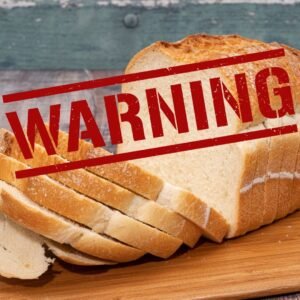
Poop & Weight Loss/Gain: How Your Bowel Health Impacts Your Scale
Your scale isn’t measuring fat — it’s measuring what your gut hasn’t let go of. Hidden stool retention, slow motility, and gut bacteria can quietly

Home » Hemorrhoids: Causes, Prevention, and the Game-Changing Benefits of The PoopSTICK
Hemorrhoids. Just hearing the word can make people uncomfortable, and if you’ve ever experienced them, you know why. Hemorrhoids are one of those conditions that many suffer in silence, often too embarrassed to talk about, even with their closest friends or family members. But let’s break the silence—because the truth is, hemorrhoids are incredibly common, and they are nothing to be ashamed of.
According to the National Institute of Diabetes and Digestive and Kidney Diseases, nearly half of people over the age of 50 have experienced hemorrhoids. That’s millions of people dealing with the discomfort, pain, and inconvenience that hemorrhoids can bring. But here’s the good news: while hemorrhoids are common, they are also largely preventable.
In this post, we’re going to explore everything you need to know about hemorrhoids—what they are, how they’re caused, and most importantly, how you can prevent them. We’ll also introduce you to a groundbreaking tool that can make a significant difference in your daily routine: The PoopSTICK. This innovative device is designed to make pooping easier and more natural, helping to prevent hemorrhoids before they start. By the end of this article, you’ll be armed with the knowledge and tools to take control of your bowel health, and you might just wonder how you ever lived without The PoopSTICK.
Hemorrhoids, sometimes referred to as piles, are swollen and inflamed veins in the rectum and anus that cause discomfort and bleeding. They can develop inside the rectum (internal hemorrhoids) or under the skin around the anus (external hemorrhoids). While hemorrhoids can be a painful and irritating condition, understanding what they are and how they develop is the first step in preventing them.
Internal Hemorrhoids: These are located inside the rectum and are usually not visible. You might not even know you have them until you notice streaks of bright red blood on toilet paper or in the toilet bowl. While internal hemorrhoids are generally painless, they can become problematic if they prolapse, meaning they push through the anus and become irritated.
External Hemorrhoids: These occur under the skin around the anus and can be felt as hard lumps. External hemorrhoids are more likely to cause discomfort or pain, especially during bowel movements. They can also lead to itching, swelling, and in some cases, bleeding.
Symptoms: Whether internal or external, hemorrhoids share some common symptoms, including:
Understanding these symptoms is crucial for recognizing hemorrhoids early and taking steps to address them before they worsen.

Hemorrhoids develop when there is increased pressure on the veins in the rectal area, causing them to swell. This pressure can be the result of several factors, many of which are tied to our daily habits and lifestyle choices.
Straining During Bowel Movements
One of the most common causes of hemorrhoids is straining during bowel movements. When you strain, you’re putting excessive pressure on the veins in your rectum and anus. This increased pressure can cause the veins to become swollen and irritated, leading to hemorrhoids. Straining often occurs due to constipation, which forces you to push harder to pass stool.
Chronic Constipation or Diarrhea
Both chronic constipation and diarrhea can lead to hemorrhoids. Constipation causes you to strain more during bowel movements, while diarrhea can irritate the rectum and anus, leading to inflammation and swelling of the veins. Both conditions disrupt the regularity of your bowel movements, increasing the likelihood of developing hemorrhoids.
Sitting for Prolonged Periods
Whether it’s sitting at a desk for work or spending too much time on the toilet, prolonged sitting is another major contributor to hemorrhoids. Sitting for long periods, especially on the toilet, increases pressure on the veins in your rectal area. When you sit, gravity causes blood to pool in the lower part of your body, and this can lead to swelling in the veins around the anus.
Pregnancy
Pregnancy is another common cause of hemorrhoids, especially in the later stages. As the uterus expands, it puts pressure on the veins in the rectum and anus. This increased pressure, combined with hormonal changes that relax the blood vessels, can lead to the development of hemorrhoids. Additionally, constipation is common during pregnancy, further increasing the risk.
Obesity
Carrying excess weight can put additional pressure on your pelvic area, including the veins in your rectum and anus. This pressure can cause the veins to swell, leading to hemorrhoids. Obesity also often correlates with a sedentary lifestyle, which, as mentioned, is another risk factor for hemorrhoids.
Low-Fiber Diet
A diet low in fiber is a significant contributor to constipation and straining during bowel movements, both of which can cause hemorrhoids. Fiber is essential for keeping your digestive system moving smoothly. It adds bulk to your stool, making it easier to pass and reducing the need to strain. Without enough fiber, your stools can become hard and difficult to pass, leading to constipation and an increased risk of hemorrhoids.
Understanding these causes is key to preventing hemorrhoids. By addressing the underlying factors that lead to increased pressure on the rectal veins, you can significantly reduce your risk of developing hemorrhoids.

The good news is that hemorrhoids are preventable, and making a few lifestyle changes can go a long way in keeping them at bay. In this section, we’ll explore several strategies for preventing hemorrhoids, from dietary changes to adopting better bathroom habits.
Adopting a High-Fiber Diet
One of the most effective ways to prevent hemorrhoids is by increasing your fiber intake. A diet rich in fiber helps to keep your digestive system running smoothly, reducing the risk of constipation and the need to strain during bowel movements. There are two types of fiber: soluble and insoluble. Both are important for maintaining regular bowel movements.
Incorporating more fiber into your diet is easier than you might think. Start your day with a bowl of oatmeal topped with fresh fruit, snack on nuts or raw vegetables, and choose whole-grain bread and pasta over refined options. Aim for at least 25 to 30 grams of fiber per day.
Staying Hydrated
Along with a high-fiber diet, staying hydrated is crucial for preventing constipation. Water helps to keep your stool soft, making it easier to pass and reducing the need to strain. When you’re dehydrated, your body absorbs more water from your stool, leading to hard, dry stools that are difficult to pass.
Make it a habit to drink plenty of water throughout the day. The general recommendation is to drink at least eight 8-ounce glasses of water per day, but your needs may vary depending on your activity level, climate, and overall health. If you find it challenging to drink enough water, try carrying a reusable water bottle with you, setting reminders on your phone, or infusing your water with fruit for added flavor.
Regular Exercise
Physical activity is not only good for your overall health but also plays a crucial role in preventing hemorrhoids. Regular exercise helps to stimulate bowel function, reducing the risk of constipation and promoting regular bowel movements. It also helps to maintain a healthy weight, which can alleviate pressure on the rectal veins.
You don’t need to run marathons to benefit from exercise. Even moderate activities like walking, swimming, or yoga can make a big difference. Aim for at least 30 minutes of physical activity most days of the week. Exercise can also help reduce stress, which can contribute to digestive issues and, consequently, hemorrhoids.
Avoiding Prolonged Sitting
As we’ve discussed, sitting for long periods, particularly on the toilet, can increase the pressure on the veins in your rectal area and contribute to hemorrhoids. To prevent this, try to minimize the time you spend sitting in one place. If you have a desk job, make a conscious effort to stand up and move around every hour. Consider using a standing desk or a stability ball to engage your core muscles while you work.
When it comes to bathroom habits, avoid lingering on the toilet. Some people have a habit of reading or using their phones while on the toilet, which can lead to prolonged sitting and increased pressure on the veins. Instead, try to focus on the task at hand, and once you’re finished, get up and move on with your day.

Now that we’ve covered some general strategies for preventing hemorrhoids, it’s time to introduce you to a tool that can make a significant difference in your daily bathroom routine: The PoopSTICK.
Introduction to The PoopSTICK
The PoopSTICK is a simple yet innovative device designed to make pooping easier and more natural. It’s not just another bathroom gadget—it’s a game-changer for anyone looking to prevent hemorrhoids and improve their overall bowel health. The concept behind The PoopSTICK is based on the natural squatting position, which has been used by humans for thousands of years. This position aligns the colon in a way that facilitates easier and more complete bowel movements.
How The PoopSTICK Works
To understand how The PoopSTICK works, it’s essential to understand the mechanics of pooping. When you sit on a standard toilet, your colon is somewhat kinked, which makes it harder to pass stool. This is why you might find yourself straining to complete a bowel movement. Straining, as we’ve discussed, is a significant cause of hemorrhoids.
The PoopSTICK helps to mimic the natural squatting position by elevating your feet and changing the angle of your body. This slight change in posture straightens the colon, allowing for a smoother and more efficient elimination process. By using The PoopSTICK, you can reduce the need to strain, which in turn reduces the risk of developing hemorrhoids.
Using The PoopSTICK is simple. Place the device in front of your toilet, and when you’re ready to go, rest your feet on it while sitting on the toilet. The elevation helps to align your colon properly, making the process of elimination easier and more comfortable.
Benefits of Using The PoopSTICK
The PoopSTICK offers several benefits that make it an excellent addition to your bathroom routine:
Incorporating The PoopSTICK into your daily routine is a simple yet effective way to take control of your bowel health and prevent hemorrhoids. By making pooping easier and more natural, The PoopSTICK can help you avoid the discomfort and inconvenience of hemorrhoids, allowing you to enjoy a healthier, happier life.
User Testimonials and Case Studies
The PoopSTICK has already made a difference in the lives of many users. Here’s what some of them have to say:
“I’ve struggled with hemorrhoids for years, and nothing seemed to help. I was skeptical about The PoopSTICK at first, but after just a few weeks of use, I noticed a significant improvement. My bowel movements are easier, and I haven’t had a flare-up since I started using it.” — Sarah M.
“I never realized how much strain I was putting on my body every time I used the bathroom. The PoopSTICK has completely changed the way I go. It’s comfortable, easy to use, and has made a noticeable difference in my digestive health.” — James L.
“As someone who’s been dealing with constipation for years, The PoopSTICK has been a lifesaver. It makes pooping so much easier, and I feel so much better knowing I’m taking steps to prevent hemorrhoids.” — Emily R.
These testimonials highlight the real-world benefits of The PoopSTICK and show how it can be a valuable tool for anyone looking to improve their bowel health and prevent hemorrhoids.

In addition to the strategies we’ve discussed so far, there are a few more tips that can help you prevent hemorrhoids and maintain good bowel health.
Proper Bathroom Habits
Your bathroom habits play a significant role in preventing hemorrhoids. Here are a few tips to keep in mind:
Use of Over-the-Counter Remedies
If you’re already experiencing the symptoms of hemorrhoids, there are several over-the-counter remedies that can help to relieve discomfort and promote healing. These include:
While these remedies can provide temporary relief, it’s important to address the underlying causes of hemorrhoids to prevent them from recurring.
Hemorrhoids may be a common condition, but they don’t have to be an inevitable part of life. By understanding the causes of hemorrhoids and taking proactive steps to prevent them, you can avoid the discomfort, pain, and inconvenience that they bring.
A high-fiber diet, staying hydrated, regular exercise, and avoiding prolonged sitting are all important strategies for preventing hemorrhoids. But perhaps the most effective and innovative tool you can add to your prevention toolkit is The PoopSTICK. By promoting a natural squatting posture during bowel movements, The PoopSTICK makes pooping easier, reduces the need to strain, and helps to prevent hemorrhoids before they start.
Don’t let hemorrhoids control your life. Take action today by incorporating these prevention strategies into your daily routine and consider adding The PoopSTICK to your bathroom. Not only will you improve your bowel health, but you’ll also enjoy the peace of mind that comes with knowing you’re doing everything you can to prevent hemorrhoids.
If you’re interested in learning more about The PoopSTICK and how it can benefit you, visit www.thepoopstick.com. And don’t forget to share this post with your friends and family—because everyone deserves to know how they can prevent hemorrhoids and enjoy a healthier, happier life.

Your scale isn’t measuring fat — it’s measuring what your gut hasn’t let go of. Hidden stool retention, slow motility, and gut bacteria can quietly

Your poop is a real-time report card on your gut health—and most people are ignoring it. From color changes to weird shapes to the clues

Wheat isn’t the villain—it’s the kind of wheat that’s wrecking your gut. From ancient grains to modern hybrids, discover how today’s wheat triggers inflammation, worsens

Your gut isn’t just digesting food—it’s controlling your hunger, energy, and even how fast you burn fat. Inside you is a powerful hormone called GLP-1,

Happy Poops.
What about your friends?